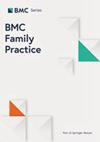A systematic review of the types, workload, and supervision mechanism of community health workers: lessons learned for Indonesia
IF 3.2
3区 医学
Q1 MEDICINE, GENERAL & INTERNAL
引用次数: 0
Abstract
Community health workers (CHWs) have demonstrated capability to improve various health indicators, however, many programmes require support in meeting their objectives due to subpar performance and a high rate of CHW attrition. This systematic review investigated the types of CHWs, their workloads, and supervision practices that contribute to their performance in different countries. The search was carried out in November 2022 in Medline, Embase, and Neliti for studies published in Indonesian or English between 1986 and 2022 that reported public health services delivered by CHWs who live and serve the community where they live but are not considered health professionals. The findings were synthesised using a thematic analysis to assess key factors influencing the performance of CHWs. Sixty eligible articles were included in this review. CHWs were responsible for more than two diseases (n = 35) and up to fifteen, with more than eighteen activities. Their roles covered the human life cycle, from preparation for pregnancy, care for newborns, health for children, adolescents, and productive age to elderly individuals. They were also involved in improving environmental health, community empowerment, and other social issues hindering access to health services. They carried out promotive, preventive, and curative interventions. The CHW-population ratio varied from eight to tens of thousands of people. Some CHWs did not have a clear supervision system. Challenges that were often faced by CHWs included inappropriate incentives, inadequate facilities, insufficient mentoring, and supervision, many roles, and a broad catchment area. Many studies revealed that CHWs felt overburdened and stressed. They needed help to balance their significant work and domestic tasks. Effective planning that considered the scope of work of CHWs in proportion to their responsibilities and the provision of necessary facilities were crucial factors in improving the performance of CHWs. Supportive supervision and peer-supervision methods are promising, however, any CHW supervision required a detailed protocol. This systematic review emphasised the opportunity for CHW management system improvement in Indonesia.系统审查社区卫生工作人员的类型、工作量和监督机制:印度尼西亚的经验教训
社区保健员(CHWs)已证明有能力改善各种健康指标,但由于表现不佳和自然减员率较高,许多计划需要支持才能实现其目标。本系统性综述调查了不同国家卫生保健人员的类型、工作量以及有助于提高其绩效的监督方法。我们于 2022 年 11 月在 Medline、Embase 和 Neliti 中检索了 1986 年至 2022 年间以印尼语或英语发表的研究报告,这些研究报告涉及由社区保健工作者提供的公共卫生服务。研究结果采用主题分析法进行综合,以评估影响社区保健员绩效的关键因素。本次综述共纳入了 60 篇符合条件的文章。社区保健员负责两种以上的疾病(n = 35),最多可负责 15 种疾病,开展 18 项以上的活动。他们的职责涵盖人类生命周期,从怀孕准备、新生儿护理、儿童健康、青少年健康、生产年龄到老年人。他们还参与改善环境卫生、社区赋权和其他阻碍获得医疗服务的社会问题。他们开展促进性、预防性和治疗性干预。社区保健工作者与人口的比例从 8 人到数万人不等。一些社区保健员没有明确的监督制度。儿童保健工作者经常面临的挑战包括激励措施不当、设施不足、指导和监督不够、角色繁多以及服务范围广。许多研究表明,社区保健工作者感到负担过重,压力很大。她们需要帮助来平衡重要的工作和家务。有效的规划应考虑到儿童保健工作者的工作范围与其责任相称,并提供必要的设施,这些都是提高儿童保健工作者绩效的关键因素。支持性督导和同伴督导方法很有前景,但任何对社区保健工作者的督导都需要详细的协议。本系统综述强调了在印度尼西亚改善社区保健工作者管理系统的机会。
本文章由计算机程序翻译,如有差异,请以英文原文为准。
求助全文
约1分钟内获得全文
求助全文
来源期刊

BMC Family Practice
医学-医学:内科
CiteScore
3.20
自引率
0.00%
发文量
0
审稿时长
4-8 weeks
期刊介绍:
BMC Family Practice is an open access, peer-reviewed journal that considers articles on all aspects of primary health care research. The journal has a special focus on clinical decision making and management, continuing professional education, service utilization, needs and demand, and the organization and delivery of primary care and care in the community.
 求助内容:
求助内容: 应助结果提醒方式:
应助结果提醒方式:


